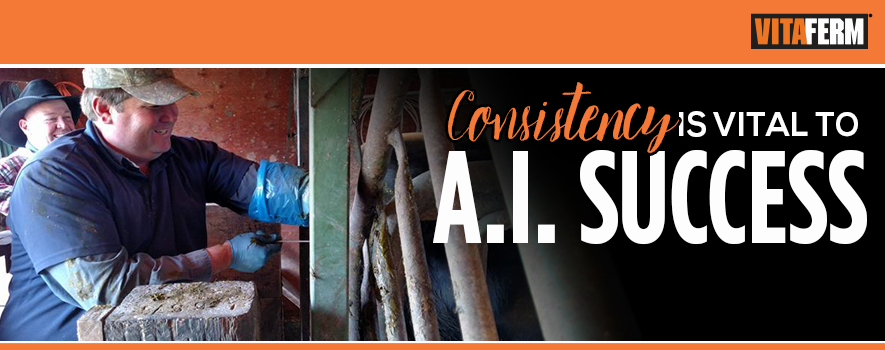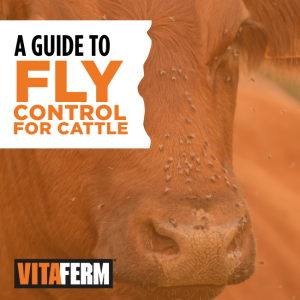It’s time to start thinking about preparing for your cow herd’s breeding season, and one of the most important considerations is keeping them on a consistent nutrition plan. What? You are just getting geared up for spring calving? Then, now is the perfect time to start making sure your females will be in proper nutritional shape when it comes time to artificially inseminate (A.I.) them.
“You need to have a plan starting when they enter their last trimester of pregnancy and head into calving,” said Clint Sexson, Large Herd Specialist at All-West Select Sires based out of Stanfield, Oregon. “Make sure you keep your cattle on a consistent supplementation plan, and have the products on hand. By doing this, you shouldn’t have to catch-up your cows after calving when it comes time to breed them.”
Sexson, who A.I.’s hundreds of cows each year, said first-calf heifers should have a body condition score (BCS) of 5.5 to 6 as they approach parturition. Mature cows that are done growing should have a BCS of 5 to 5.5. If your cattle are a little thinner than desirable, he recommends increasing their energy or protein prior to calving, but reminds that postpartum it is better to increase their energy, as mature cows only need 9-11% crude protein in their diets.
“If a cow can maintain consistency with her diet, and isn’t dealing with changes prior to calving and for the first 45 days after calving, it will help increase her conception rates,” Sexson said.
He added that consistency is important to not only her diet, but also her environment. And, if cows need to be moved post-breeding, they need to be transported within the first 72 hours after they are A.I.’ed, or they need to wait 45 days before being moved. The more consistency and less stress the cows experience, the more likely they are to conceive on the first breeding.
Synch and Breed
Once you have determined your calving date for the next year, start planning your breeding calendar by working backward. Use a gestation calendar to determine a breeding date based on when you want to calve. Once you know your breeding date, you will continue to work backward to know when to start your estrus synchronization process.
Sexson said that conception rates will increase if you wait at least 55-60 days postpartum to begin synchronizing first-calf heifers; older cows should wait at least 45-60 days after calving. There are three basic synchronization methods using one or a combination of drugs to administer to ensure your cows come into heat at the same time.
Once your females are synchronized, it is time to wait and watch for them to come into heat. Depending on your amount of labor, you can breed using fixed-A.I. protocols or if you have more abundant labor, you can check for heat and breed morning and night, potentially increasing your conception rates.
Sexson offers other suggestions to increase conception rates, which normally range from 55-70%. He said that if you have a group of cows that were more stressed at calving you might want to hold them to a later group to breed. This might include cows that had assisted births, gave birth to twins or are marginal on their BCS.
“We don’t know where these cows are in their healing process and so it is better to push them into the next group to give them more time to heal so they don’t lower the conception rate,” Sexson said.
He said this is especially common in a purebred operation where return heats would be resynchronized and could be managed in the same group of late-calving cows. Whereas in the commercial operations he has worked with, the cows get one chance to conceive via A.I. before they are sent out with the bull battery.
Another group of females that typically have trouble breeding the first time are virgin heifers. Sexson suggests producers consider a 14-day CIDR protocol with this group so they have one estrus cycle prior to breeding. The heifers are not always the most fertile during that first heat; so if you breed them on their next cycle, they should be more fertile, therefore boosting their conception rate as a group.
“If a producer thoroughly understands the cost and labor involved with A.I., and they are comfortable with both those factors, they can have a successful A.I. program,” Sexson said.
Labor is a big factor when preparing to A.I. breed your herd, but studies have shown that an A.I.-sired calf is worth more dollars. Other costs involve synchronization drugs and resources for getting your cow bred – semen, facilities and time and labor costs for an A.I. technician, all things your local semen company can provide.
Stay consistent. Keep your cows in a constant environment and on a consistent diet prior to calving through breeding and you will see your conception rates climb.



